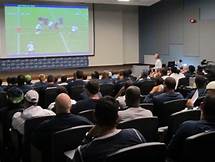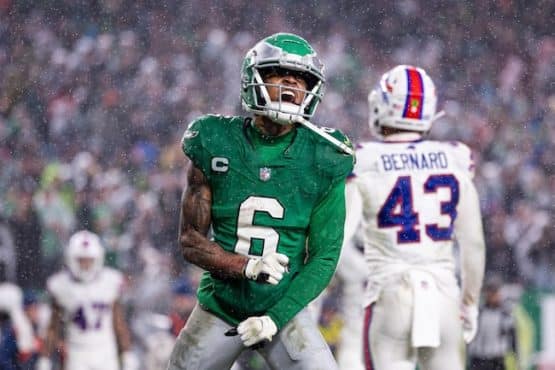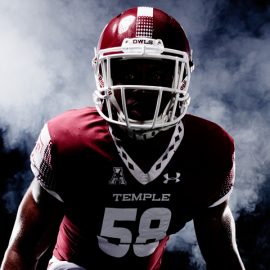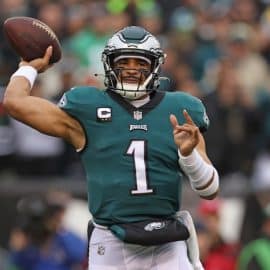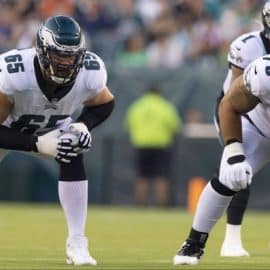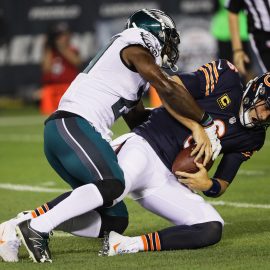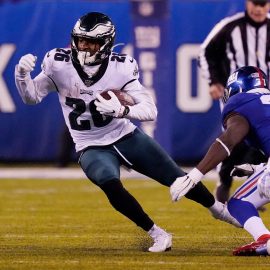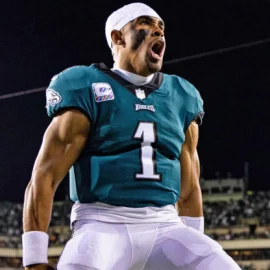If the upcoming Super Bowl will be decided by which team did more film study in preparation, it will be the Eagles.
I remember interviewing Ray Lewis and Ed Reed (future Hall of Fame’rs) back in the glory days of the Baltimore Ravens. Each of them testified to film study as the basis of their pro success. Back then, you had to sign out with the team library to take VHS tapes and/or DVD’s home with you to do extra study work. Today, it’s a lot easier for players to do extra-credit homework—it’s all digitalized and the team can email specialized video to your personal password-protected tablet.
The bottom line is, pro football is a physical game—but the winners’ edge is mental.
If that thesis holds true, the Eagles are in good shape—or at least have a puncher’s chance vs. the Patriots, who are also known for extensive film study—and some of it legal!
Much credit to Dave Spadaro over at PE.com, who recently wrote one of his best articles ever if you’re going to hold him to his “On The Inside” claim to fame.
This article was the first of its kind to really break down how much actual film study the Eagles do, broken down by position.
Here are some excerpts:
“I probably watch two hours a day on my own in addition to the meetings. We probably have three hours of meetings every day,” safety Malcolm Jenkins said. “It’s a fun way for me to unwind. There’s a picture in my head that I develop over the course of the week where I’m not really sure of the game plan early in the week, I’m not really sure what positions I’ll be in, so I want to become familiar with the opponent.
“Then we’ll break things down and I’ll continue to watch the games over and over and play it in my head, so by the time we get to Saturday, the day before the game, I have a super-clear picture of what situation we’ll be in, what coverage, where I’ll be at on each and every snap. I’ll watch film over and over until that picture becomes clear.”
Defensive players off the line of scrimmage have the responsibility of watching everything an opposing offense has employed during the course of a season or, in some cases, throughout a career. They look at personnel groupings, formations, routes, and tendencies. They try to pick up cadences from the quarterback. Any subtle move is noted.
“You’re learning something new all the time. Guys who have been in this league as long as I have been, I’m 27 years old now, and guys who are older than me still tell me they learn something new every day,” linebacker Mychal Kendricks said. “I think I became good at it, honestly, I would say my third year. I got to the point where I could actually start keying in and learning things on my own, little nuances that I see. It’s really just philosophy. I used to think that things were only a certain way, but as you get older and you learn this game a little bit more you understand that it’s just preference and philosophy.”
Offensive tackle Lane Johnson and his linemates watch film with coach Jeff Stoutland for three hours a day, five days a week before games. That’s a lot of film. That’s a ton to digest. Johnson will then watch another 45 minutes or so each night on his own, studying the men he expects to see across the line of scrimmage from him on gamedays.
Tight end Trey Burton acknowledges that defensive players watch more than most offensive players, simply because they have to see everything. Burton isn’t watching every part of a defense. He knows his assignments and he knows the positional players who are going to line up against him.
Plus, for Burton, there is a sense of “reaction” that he prefers in a game.
“That is big for me, so I don’t want to overflood myself with tendencies and things like that,” he said. “I like to go out and play football.”
Safety Rodney McLeod, like Jenkins, must have a clear vision of the opponent’s offense, so he’s got a very specific routine that includes notes that must match up with the video he’s watching. Technology enables the players to watch all they want as creatively as they want to be.
“I’ll watch the last three games of a team on Monday and Tuesday and then once we get to gameplan Tuesday, I’ll prepare a day ahead,” McLeod said. “So I’ll watch first and second down Tuesday nights, because we practice that on Wednesday, then I’ll watch third downs on Wednesday, and red zone on Thursday night. Then I’ll pick out some games and watch the first half of those games and then more red zone.
“I’m surprised sometimes, but most of the time I’m completely prepared and I see on the field what I’ve seen studying film. That’s when you play your best football. I never go into a game thinking I haven’t prepared enough. That’s my responsibility.”
Jenkins credits watching video – it was tape in the old, old days and then film in the old days and now it’s video – for making him a Pro Bowl player.
“I watched film a lot as a young player but I didn’t necessarily know how to watch it and some former teammates in New Orleans taught me the way to do it, the process it requires, to really learn from it,” Jenkins said, crediting former Saints linebacker Jonathan Vilma and defensive back Roman Harper for their guidance. “I am rarely surprised on the field. I wouldn’t be close to the player I am without watching it. I always say that film study is 80 percent of my game.”
When I interviewed Ray Lewis and Ed Reed years ago about their dedication to film study, they both said similar things about it as Malcolm Jenkins just said. Neither of them put it into an “80 percent of their game” context….but looking back on it, I think they were close to admitting it.
Of course, this topic begs the question: what tapes are Tom Brady, Danny Amendola and Patrick Chung watching tonight?
Add The Sports Daily to your Google News Feed!
